module 4: antigens & immunogens
1/37
There's no tags or description
Looks like no tags are added yet.
Name | Mastery | Learn | Test | Matching | Spaced |
|---|
No study sessions yet.
38 Terms
antigens
bind to components of the immune response but do not elicit an immune response (ex: haptens)
antigenicity
the ability to combine specifically with the products of the humoral and/or cell-mediated responses
immunogens
evoke an immune response & bind to components of the immune response
haptens
small molecules that display antigenicity but not immunogenicity. “all immunogens are antigens, but not all antigens are immunogens”. may bind antibodies, but cannot activate B cells on their own. when covalently attached to a carrier molecule (macromolecule), an immune response can be elicited.
epitope/antigenic determinant
antigenic site which binds to an antibody OR gives rise to the MHC-binding peptide recognized by a T-cell receptor. approximately 6 amino acids or 5-7 monosaccharides in length.

structural features of variable region
most sequence differences in antibodies are confined to 3 short stretches in the variable (V) region of the heavy & light chains. the chains are called complementary determining region (CDR) or hypervariable region. all CDRs or hypervariable regions contribute to epitope binding. contains paratopes
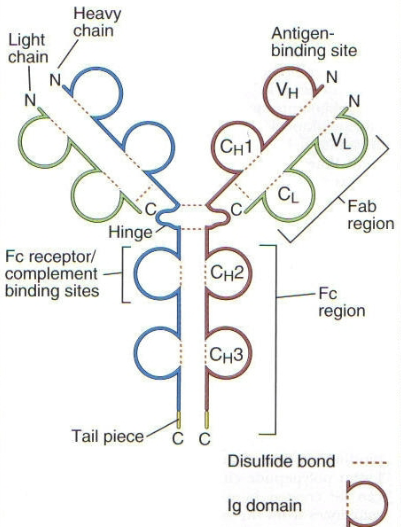
paratope
the antibody combining site
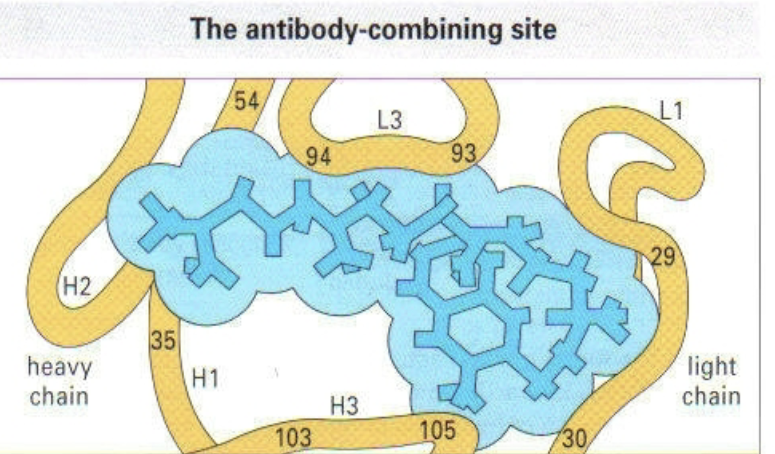
B cell epitopes
determined by the nature of antigen binding site on the antibody molecule displayed by these. can contain sequential or non-sequential (conformational) epitopes. nature of antigens are proteins, polysaccharides, or lipids.
linear (sequential) epitope
a continuous sequence of amino acids recognized by an antibody
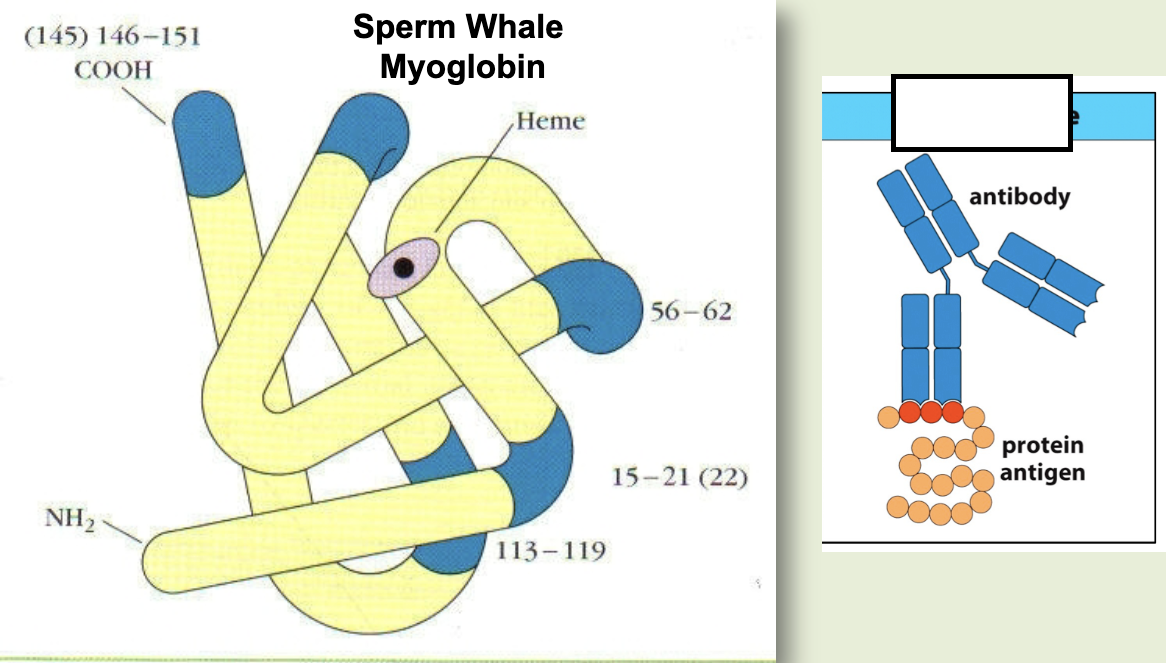
conformational (discontinuous) epitope
amino acids that are distant in protein’s primary sequence, but brought together in 3D structure through folding
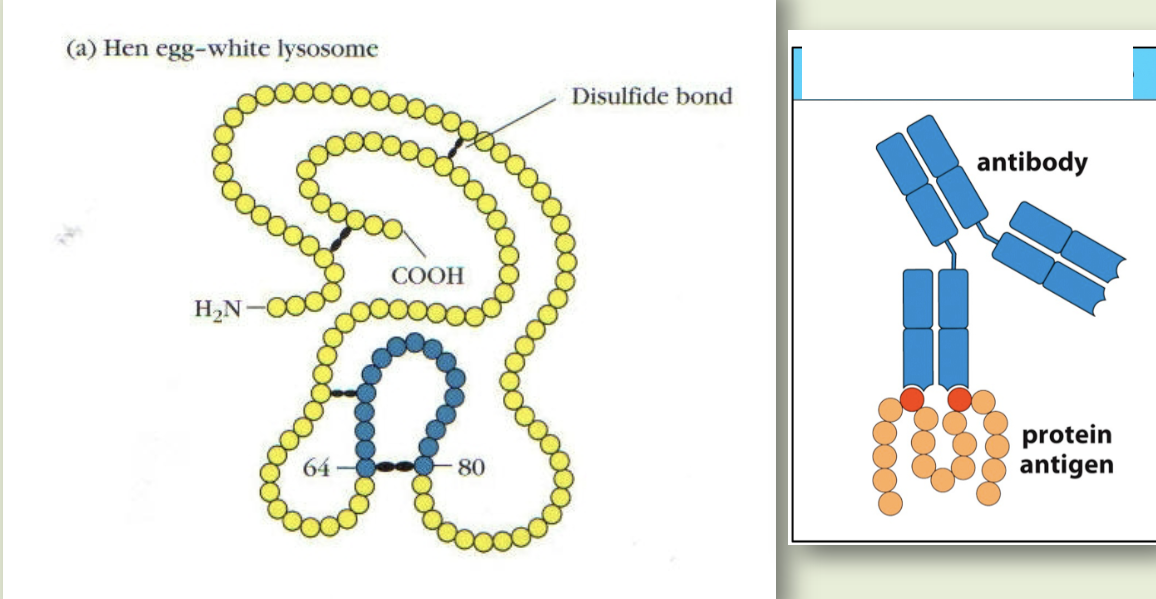
T cell epitopes
do not recognize soluble antigens. antigens must be processed by antigen presenting cells. antigen peptides recognized by these form tri-molecular complexes with a T cell receptor and an MHC molecule presenting a peptide. can be linear or continuous. often internal
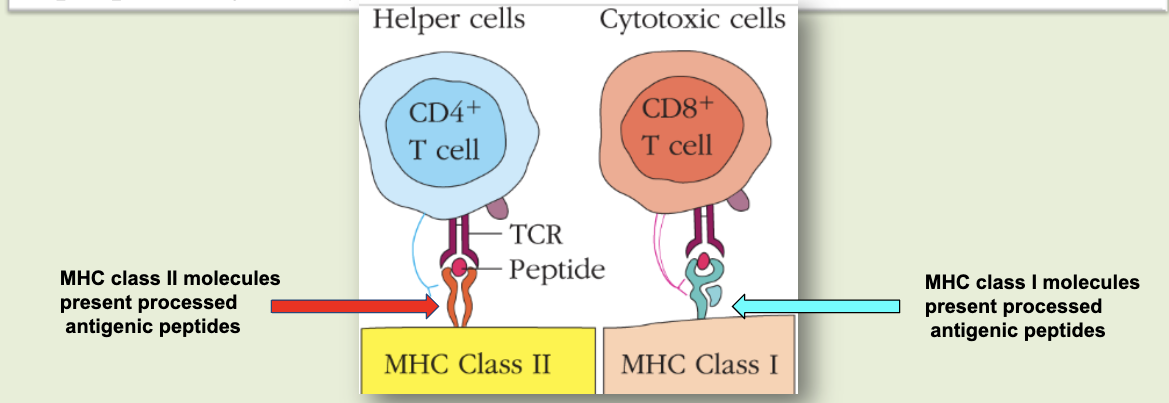
antigen recognition by B cells
involves binary complex of membrane Ig & Ag. binds with soluble antigen. no MHC molecules. antigens are protein, polysaccharide, lipid. epitope is accessible, hydrophilic, mobile, peptide containing sequential or non-sequential aa
antigen recognition by T cells
involves ternary complex of T cell receptor, Ag, MHC molecule. does not bind to soluble antigen. MHC required to display processed antigen. antigens are mostly proteins with some lipids & glycolipids. epitope is internal linear peptide produced by processing of antigen & bound to MHC molecules.
what makes a substance immunogenic?
“foreign-ness”, high MW, chemical composition & complexity, degradability. additional requirements (host dependent): genetic composition, dose & route of administration
“foreign-ness”
something that is not naturally occurring. body cannot recognize it as it’s own.
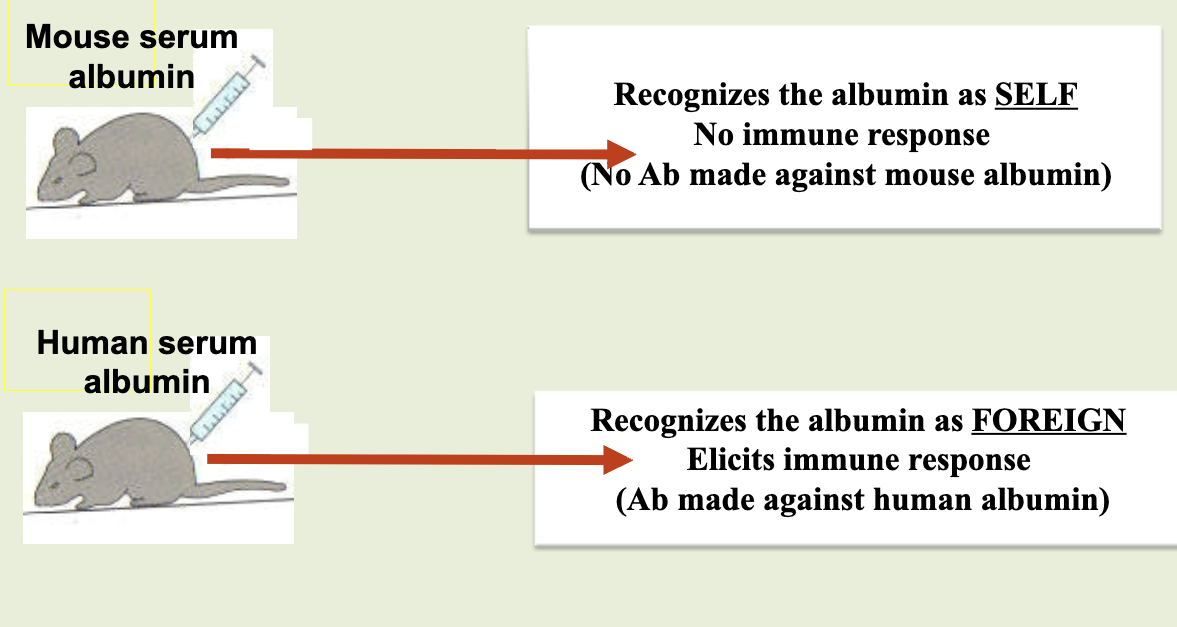
large size (high MW)
compounds that weigh less than 100 Da are not immunogenic (penicillin, progesterone, aspirin). higher than 10,000 Da are immunogenic only if they have chemical complexity
chemical composition & complexity
compounds with high MW & no chemical complexity, such as homopolymeric compounds, are not immunogenic (ex: poly-lysine)
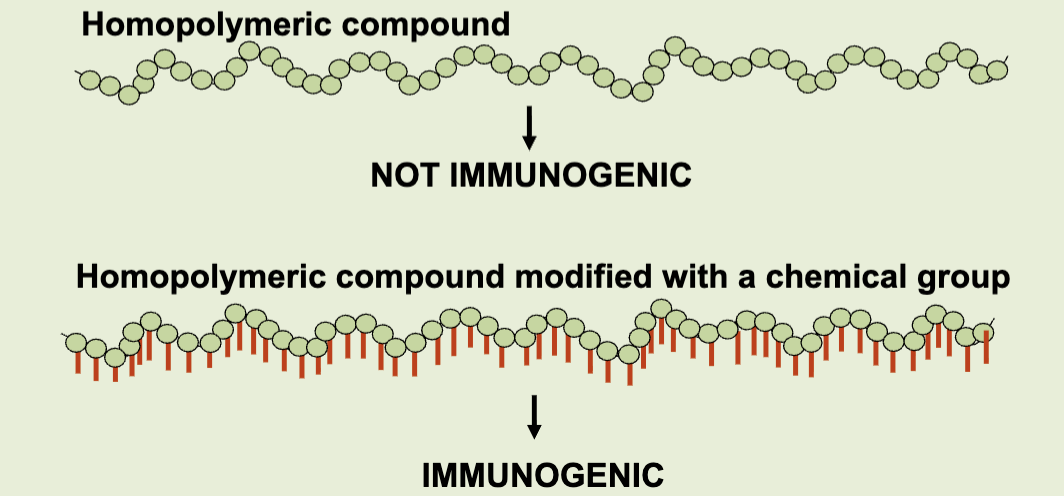
degradability
to activate T cells, antigens must be processed by APCs. APC degrades the antigen into small fragments. small fragments of the immunogen (antigenic epitope) are noncovalently bound to MHC & expressed on the surface of the APC. non-biodegradable substances are not immunogenic: silicone implants, stents, hip implants
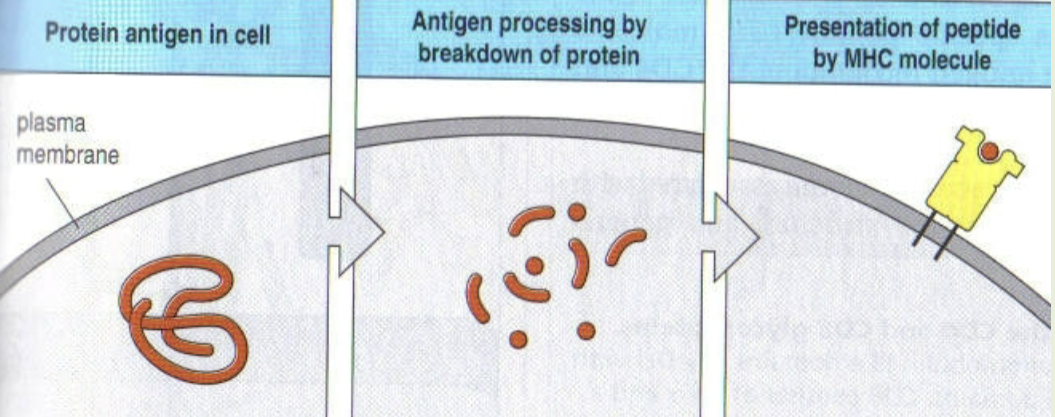
carrier molecule
immunogenic molecule that is recognized by T cells. conjugation of a carrier to nonimmunogenic hapten makes the hapten immunogenic. ex: bovine serum albumin, keyhole limpet hemocyanin
hapten-carrier conjugate 3 types of antibodies
against hapten
against carrier
against the new epitope formed by combined parts of hapten & carrier
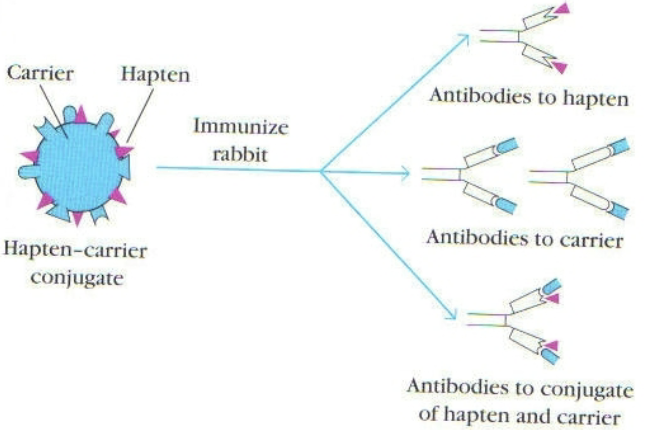
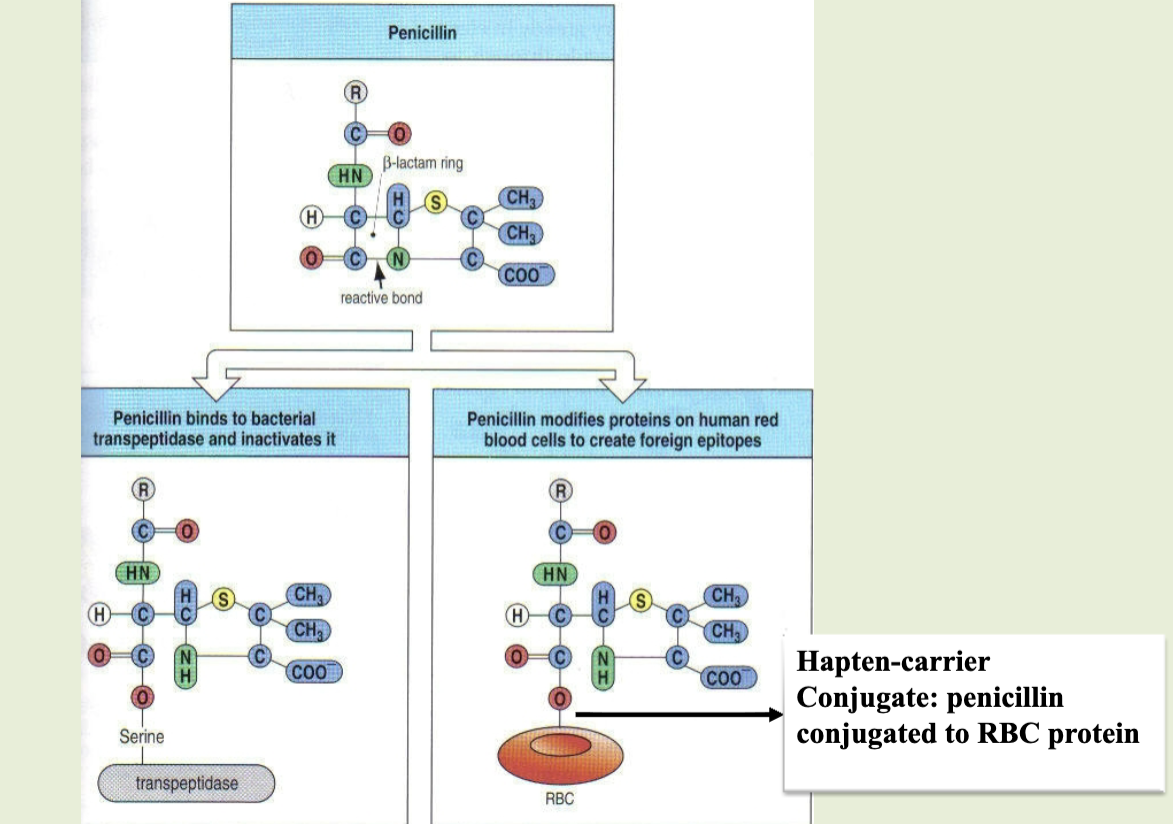
penicillin
a hapten that sometimes elicits antibody production causing type II hypersensitivity reactions. acts as a substrate for bacterial transpeptidase, thereby inactivating the enzyme permanently: prevent cell wall synthesis. sometimes the same mechanism couples this to red blood cells, causing the formation of a hapten-carrier moiety, which then leads to production of antibodies
primary structure
at amino acid sequence level
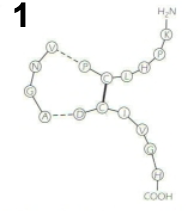
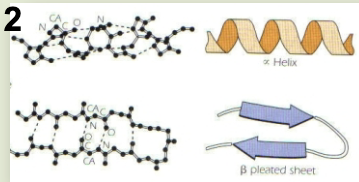
secondary structure
backbone of the polypeptide chain
tertiary structure
3 dimensional molecule
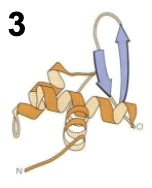
quaternary structure
association of 2 or more polypeptides
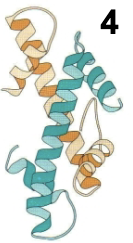
genetic composition
factor from the host that can influence immunogenicity. controlled by genes mapped within the major histocompatibility antigen (MHC). ex: 85% of people with HLA-A9 produce high [antibody] for tetanus toxoid.
route, dose, & timing of administration
factor from the host that can influence immunogenicity. subcutaneous, intravenous, gastrointestinal injections. type of immunogen processing: T-cell dependent or T-cell independent. amount of immunogens can lead to immune response or no response (tolerance)
primary response
immune response to first immunogen exposure. naive B cells are stimulated by immunogen & differentiate into Ab-secreting cells that produce Abs specific for the eliciting Ag. long lived memory cells are also produced during this response
secondary response
immune response to the second exposure of an immunogen after the first response has leveled off or has totally subsided. when the same immunogen is encountered by memory B cells, rapid proliferation & differentiation occurs and production of greater quantities of specific Abs than in the first response
conformation of the target antigen (epitope) & antibody sites
complementary. Ab forms multiple non-covalent bonds with Ag. recognition of Ag by Ab involves non-covalent reversible binding. for epitope to bind to Ab combining site, there must be suitable atomic groupings on opposing parts of the Ag & Ab. the shape of the combining site must fit the epitope
the strength of a non-covalent bond is critically dependent on…
the distance between the interacting groups. the interacting groups must be in close proximity (in molecular terms) before the forces become significant
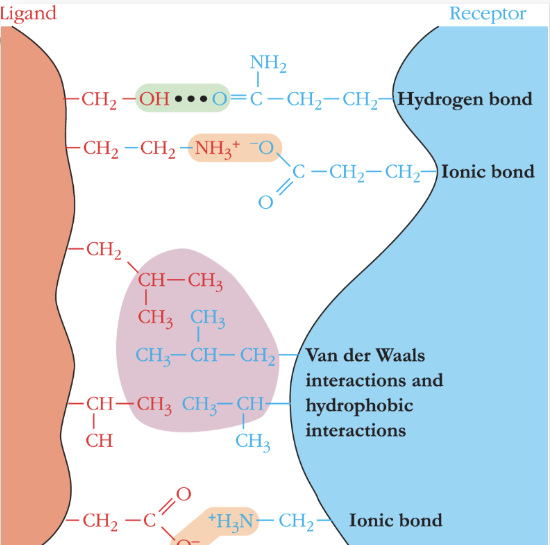
affinity
strength of the binding between an epitope & single combining site of an antibody. the sum of the attractive & repulsive forces between them. represented as a dissociation constant (Kd). to calculate this, use either equilibrium dialysis or surface plasma resonance

small Kd
indicates high affinity between Ag & Ab because low concentrations of Ag are required to bind to the Ab site. typical Kd for antibodies produced in the immune system vary from 10-7M to 10-11M
avidity
the relative tendency (indicated by strength of binding) for multiple antibodies & multivalent Ags to combine. the cumulative binding strength of all antibody-epitope pairs. high for IgG as it is bivalent (2 binding sites). very high for IgM as it is polyvalent (10 binding sites)
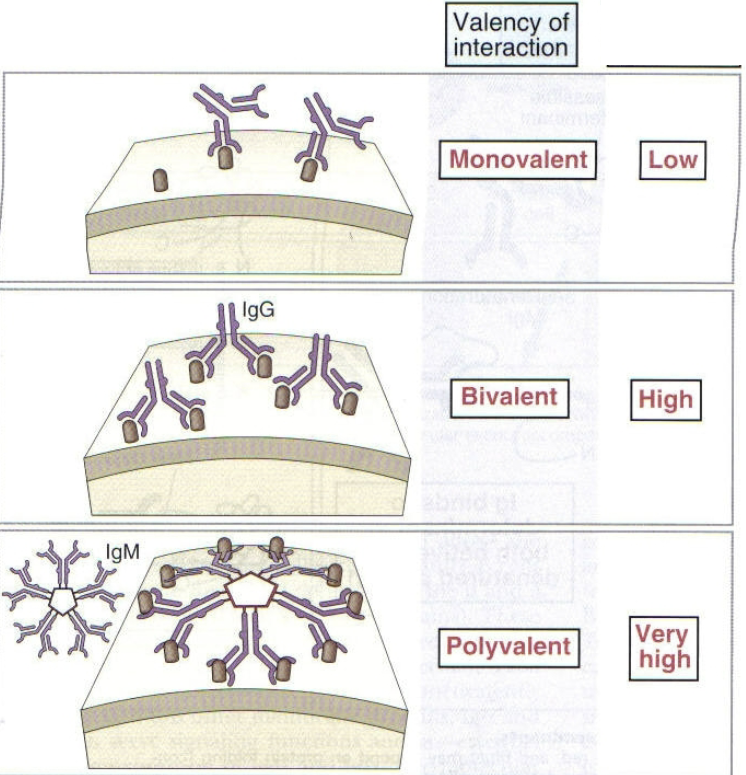
heterophile antibody
an antibody elicited by one antigen can cross-react with a second unrelated antigen. cross-reactivity occurs because the epitopes between these antigens are identical or similar
examples of cross-reactivity
antibody against Group A Streptococcus also reacts with human myocardium & may lead to rheumatic fever.
one antibody elicited against Epstein Barr virus reacts with sheep RBCs (SRBC). by measuring the heterophiles antibody against SRBC clinically, indirect evidence of recent EBV infection can be determined
vaccinia virus which causes cowpox expresses cross-reacting epitopes with variola virus (causative agent of smallpox)
ABO blood group
microbial antigens present in common intestinal bacteria elicit antibody that cross-reacts with ABO blood group antigens. microbial antigens induce the formation of antibodies in individuals lacking the similar blood group antigens on their blood cells. for A type blood, microbial antigens can induce the formation of anti-B antibodies but not anti-A. during the developmental stage, the B cells that elicit antibodies against self-antigens (self-epitopes) are eliminated. anti-B antibodies are produced by cross-reacting microbial antigens present in common intestinal bacteria
adjuvants
agents that potentiate immune responses, but are not immunogens. increase the biological half-life of vaccines (forms complex & allows for slow release of immunogens). induce production of local inflammatory responses (recruits phagocytic cells). improve antigen delivery & processing by APC. ex: water in oil emulsion (freund’s incomplete)